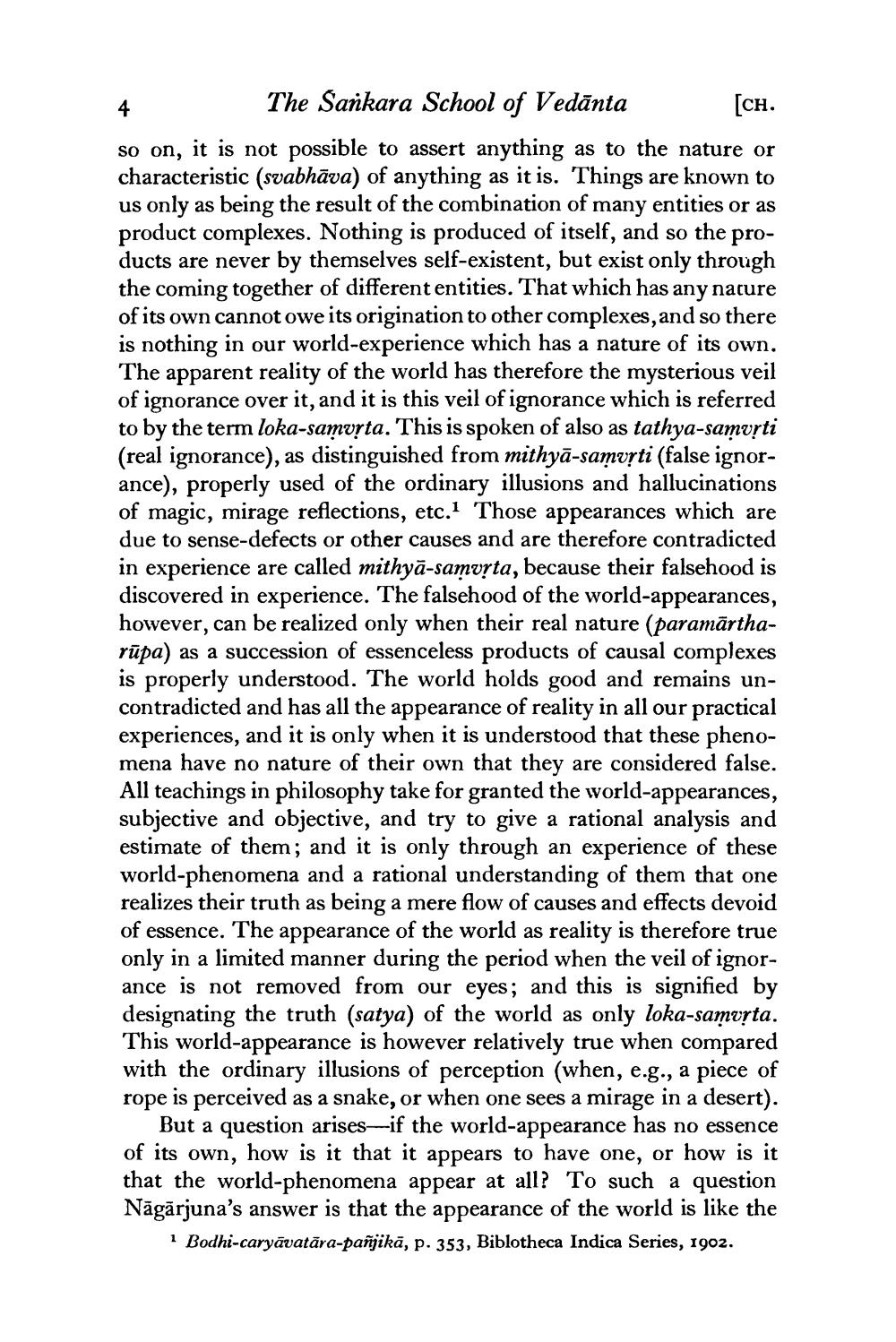________________
4
The Sankara School of Vedanta
[CH.
so on, it is not possible to assert anything as to the nature or characteristic (svabhāva) of anything as it is. Things are known to us only as being the result of the combination of many entities or as product complexes. Nothing is produced of itself, and so the products are never by themselves self-existent, but exist only through the coming together of different entities. That which has any nature of its own cannot owe its origination to other complexes, and so there is nothing in our world-experience which has a nature of its own. The apparent reality of the world has therefore the mysterious veil of ignorance over it, and it is this veil of ignorance which is referred to by the term loka-samvṛta. This is spoken of also as tathya-samvṛti (real ignorance), as distinguished from mithya-samvṛti (false ignorance), properly used of the ordinary illusions and hallucinations of magic, mirage reflections, etc.1 Those appearances which are due to sense-defects or other causes and are therefore contradicted in experience are called mithya-samvṛta, because their falsehood is discovered in experience. The falsehood of the world-appearances, however, can be realized only when their real nature (paramārtharūpa) as a succession of essenceless products of causal complexes is properly understood. The world holds good and remains uncontradicted and has all the appearance of reality in all our practical experiences, and it is only when it is understood that these phenomena have no nature of their own that they are considered false. All teachings in philosophy take for granted the world-appearances, subjective and objective, and try to give a rational analysis and estimate of them; and it is only through an experience of these world-phenomena and a rational understanding of them that one realizes their truth as being a mere flow of causes and effects devoid of essence. The appearance of the world as reality is therefore true only in a limited manner during the period when the veil of ignorance is not removed from our eyes; and this is signified by designating the truth (satya) of the world as only loka-samvṛta. This world-appearance is however relatively true when compared with the ordinary illusions of perception (when, e.g., a piece of rope is perceived as a snake, or when one sees a mirage in a desert).
But a question arises-if the world-appearance has no essence of its own, how is it that it appears to have one, or how is it that the world-phenomena appear at all? To such a question Nagarjuna's answer is that the appearance of the world is like the
1 Bodhi-caryavatāra-pañjikā, p. 353, Biblotheca Indica Series, 1902.




